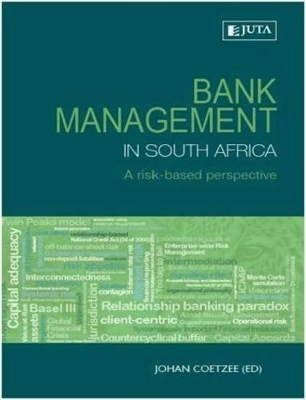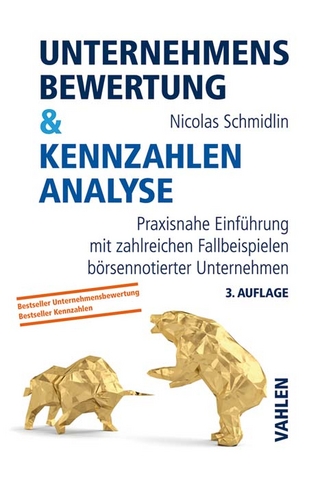
Bank management in South Africa
Juta Legal and Academic Publishers (Verlag)
978-0-7021-9786-4 (ISBN)
- Titel nicht im Sortiment
- Artikel merken
Why is the South African banking industry regarded as one of the best in the world? How is it structured? How did it avoid collapse during the global financial crisis of 2007-2009? Bank Management in South Africa: A risk-based perspective is the first textbook for the South African market to answer these questions. It provides a comprehensive overview of the way banks and their financial risks are managed. The book is divided into five parts: Part One introduces the business of banking by discussing the evolution of financial intermediation theory; Part Two deals with the structure, history, performance and regulatory environment of the South African banking industry; Part Three considers how banks report and measure their performance; Part Four focuses on how banks identify, quantify and manage financial risks; Part Five deals with the management of the asset book, liability book and, importantly, the capital adequacy requirements set by the Basel Committee on Banking Supervision.
Dr Johan Coetzee is a senior lecturer in Banking and deputy chairperson in the Department of Economics at the University of the Free State, where he teaches under- and postgraduate courses in Financial Risk Management. He has been a visiting senior lecturer in Bank Management at the Salzburg University of Applied Sciences in Austria since 2008 and was an external consultant in risk management at the South African Reserve Bank Academy in 2013 and 2014. He has several articles in national and international journals.
About the author; Foreword; Preface; Acknowledgements; Permission acknowledgements; Part one - Introduction to Banking; Chapter 1: Financial Intermediation Theory; Learning Objectives; 1.1 Introduction; 1.2 Financial Intermediation Theory; 1.3 The Business of Banking; 1.4 The Future Outlook for Banks; 1.5 Conclusion; References; Part two - The South African Banking Landscape; Chapter 2: The Competitive and Operating Environment of The South African Banking Industry; Learning Objectives; 2.1 Introduction; 2.2 An SCP Analysis of the South African Banking Industry; 2.3 Conduct Variables; 2.4 Performance Variables; 2.5 Conclusion; References; Chapter 3: Financial Regulation in the South African Banking Industry; Learning Objectives; 3.1 Introduction; 3.2 The Rationale and Limitations of Financial Regulation and Supervision; 3.3 The Financial Regulatory and Supervisory Framework in South Africa; 3.4 Market Conduct Regulation in South Africa; 3.5 Financial Inclusion and the Financial Sector Code; 3.6 Combating Money Laundering in South Africa; 3.7 Current Regulatory Trends and Developments; 3.8 Conclusion; References; Chapter 4: Relationship Banking In South Africa; Learning Objectives; 4.1 Introduction; 4.2 Distribution channels in Banking; 4.3 Transactional versus Relationship Banking; 4.4 A Model for Relationship Banking; 4.5 Conclusion; References; Chapter 5: The Development and Internalisation of South African Banking; Learning Objectives; 5.1 Introduction; 5.2 The International Banking Environment; 5.3 The History and Development of the South African Banking Environment; 5.4 The Role of South African Banks in the African Context; 5.5 International Institutions: The Role of the IMF and the World Bank; 5.6 Conclusion; References; Part Three - Reporting in Banking; Chapter 6: Integrated Reporting for Banks; Learning Objectives; 6.1 Introduction; 6.2 Organisational Reporting Framework; 6.3 Sustainability Reporting; 6.4 A Typical Integrated Report of a Bank; 6.5 Conclusion; References; Chapter 7: Financial Reporting for Banks; Learning Objectives; 7.1 Introduction; 7.2 Financial Reporting in South Africa; 7.3 The Statement of Financial Position; 7.4 Statement of Profit or Loss and other Comprehensive Income; 7.5 Other Issues in Financial Reporting; 7.6 Conclusion; References; Chapter 8: Measuring the Performance of a Bank; Learning Objectives; 8.1 Introduction; 8.2 Banking Performance as a Strategic Bank Risk Management Tool; 8.3 Conclusion; References; Part Four - Risk Management in Banking; Chapter 9: Establishing a Risk Philosophy in Banks; Learning Objectives; 9.1 Introduction; 9.2 Selected Concepts n Risk Management; 9.3 Enterprise-wide Risk Management in Banks; 9.4 How do Bank diversify Risk?; 9.5 The Outlook for Risk Management in Banking; 9.6 Conclusion; References; Chapter 10: The Identification and Measurement of Risk in Banking; Learning Objectives; 10.1 Introduction; 10.2 What is Risk?; 10.3 Risk Measurement Tools; 10.4 Risk Perception - South African Banks; 10.5 Conclusion; References; Chapter 11: The Management of Interest Rate Risk: Asset-Liability Management; 11.1 Introduction; 11.2 Asset-Liability Management: The Balance Sheet Perspective; 11.3 The Concept of Interest Rates, the Yield Curve, Interest Rate Risk and Expectations; 11.4 The Asset-Liability Committee (ALCO); 11.5 Interest-Sensitive Gap Management; 11.6 Duration Gap Management; 11.7 Managing the Economic Value of Equity; 11.8 Conclusion; References; Chapter 12: Managing Risk in Banking; Learning Objectives; 12.1 Introduction; 12.2 Derivate Instruments; 12.3 Conclusion; References; Part Five - Managing the Sources and Uses of Funds in Banking; Chapter 13: Managing the Assets of a Bank; Learning Objectives; 13.1 Introduction; 13.2 Breakdown of the Asset Book: A Recap; 13.3 Managing the Assets of a Bank; 13.4 Conclusion; References; Chapter 14: Managing the Liabilities of a Bank; Learning Objectives; 14.1 Introduction; 14.2 The Liabilities of a Bank; 14.3 Uses of Bank Liabilities; 14.4 Liquidity Management; 14.5 Conclusion; References; Chapter 15: Banks and Capital Adequacy; Learning Objectives; 15.1 Introduction; 15,2 Regulation for Bank Capital; 15.3 Basel!; 15.4 Basel 11; 15.5 Basel 11.5; 15.6 Basel 111; 15.7 Conclusion; References; Index.
| Erscheinungsdatum | 15.05.2018 |
|---|---|
| Verlagsort | Kenwyn |
| Sprache | englisch |
| Themenwelt | Wirtschaft ► Betriebswirtschaft / Management ► Finanzierung |
| Betriebswirtschaft / Management ► Spezielle Betriebswirtschaftslehre ► Bankbetriebslehre | |
| Wirtschaft ► Betriebswirtschaft / Management ► Unternehmensführung / Management | |
| Wirtschaft ► Volkswirtschaftslehre ► Finanzwissenschaft | |
| ISBN-10 | 0-7021-9786-6 / 0702197866 |
| ISBN-13 | 978-0-7021-9786-4 / 9780702197864 |
| Zustand | Neuware |
| Haben Sie eine Frage zum Produkt? |
aus dem Bereich


